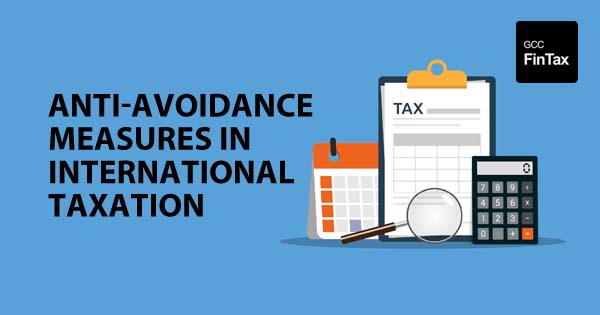We all are aware how government of each country lose billions of tax revenue as most of the individuals and corporates illegally transfer its profit to tax havens. They shift profit and erode the base of revenue from the home country.
BEPS has adverse effect on almost each country in the world and it distorts fair trade, competitions in the market. To overcome this issue of base erosion and profit shifting (BEPS) and improve more tax transparency in the system globally,there was a need for international collaboration to protect tax sovereignty of countries.
Therefore, Organization of Economic Co-operation and Development (OECD) has come up with action plans which are also known as Anti-avoidance measures in International Taxation.
There are fifteen action plans which are specified and are relevant for avoiding any issues regarding Base erosion and profit shifting. The action plans are made in accordance with the objectives of the countries.
To determine coherence, Action 2,3 & 4 were made, they are related how can we keep control on revenue that was shifted by strengthening Controlled Foreign Corporations (CFC Rules). To achieve other objectives like transparency, substance other action plans were implemented.
The following are the fifteen action plans:
- Action 1 tends to the expense difficulties of the digitalization of the economy, and explicitly means to distinguish and address the primary difficulties that the digitalization of the economy models for the current worldwide assessment rules.A last report on Action 1 was given in October 2015 close by the last reports on other BEPS activities. There are two pillars in it.
Pillar 1: Reallocation of profit and revised nexus rules
Pillar 2: Global anti-base erosion mechanism
- Action 2 aims to neutralize the effects of hybrid mismatch arrangements.The Action 2 last report delivered on 5 October 2015 sets out suggestions for domestic regulation arrangements to balance mismatch arrangements. The report additionally prescribes changes to the OECD model assessment show to keep hybrid entities from acquiring benefits as are stated in the treaty in unseemly circumstances and to permit the use of the suggested regulative arrangements.On 27 July 2017, the OECD delivered a report setting out suggestions for managing branch mismatch, to align the treatment of such constructions with the treatment of other hybrid arrangements tended to in the 2015 report.
- Action 3 intends to foster suggestions with respect to the plan and reinforcing of controlled foreign organization (CFC) rules. A last report on Action 3 was delivered by the OECD as The Action 3 serves to strengthen CFC rules.
- Action 4 intends to restrict base disintegration including interest deductions and other monetary dues. The report suggests a proper proportion that would permit organization to deduct revenue and other financial payment up to a decent level of its profit before interest, tax, depreciation, and amortization.
- Action 5 aims to recognise and counter harmful tax practices, considering transparency and substance. The Action 5 report depicts the importance of substantial activity in assessing whether a preferential regime is harmful and use the nexus approachfor relevant activity in intellectual property or patent box regimes.
- Action 6 aims to prevent treaty abuse which is one of the BEPS minimum standards. One component is that jurisdiction should convey that the treaties do not deliberately create opportunities for non-taxation or reduced taxation through tax evasion or avoidance. The other element is that jurisdictions should statenorms in the tax treaties preventing treaty abuse.
- The Action 7 report includes ways to tackle arrangements where a non-resident company trades in an area through an agent that does not formally end the contacts.
- Actions 8, 9, and 10 are arranged together by the OECD. These action states rules on transfer pricing. Action 8 covers complexities relating to areas involving intangibles, as well as cost contribution arrangements (CCAs). Action 9 conveys the contractual allocation of risks and the resulting allocation of profits to those risks, which may not correspond with the activities actually carried out.
- Action 11 intends to set up methods to collect and analyze data on BEPS and the actions to address it.
- Action 12 provide a design structure of compulsory disclosure rules for countries that choose to accept them.
- Action 13 aims to re-examine and design rules on documentation of transfer pricing, to increase transparency for tax authorities. Action 13 report propose a three-tierstructure i.e.
- Master file
- Local file
- Country-by-country (CbC) report
- Action 14 states dispute resolution mechanisms by developing solutions to confront issues that prevent countries from resolving treaty-related disputes under mutual agreement procedures (MAPs).
- Action 15 aims to develop a multinational instrument to modify bilateral tax treaties.
Disclaimer: Content posted is for informational & knowledge sharing purposes only, and is not intended to be a substitute for professional advice related to tax, finance or accounting. The view/interpretation of the publisher is based on the available Law, guidelines and information. Each reader should take due professional care before you act after reading the contents of that article/post. No warranty whatsoever is made that any of the articles are accurate and is not intended to provide, and should not be relied on for tax or accounting advice.
You can access Law including Guidelines, Cabinet & FTA Decisions, Public Clarifications, Forms, Business Bulletins for all taxes (Vat, Excise, Customs, Corporate Tax, Transfer Pricing) for all GCC Countries in the Law Section of GCC FinTax
